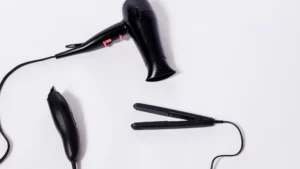Hair transplant density plays a crucial role in achieving natural-looking results in hair restoration. With the advancement of techniques like Sapphire Micro FUE, individuals have more control over how full and realistic their hair will appear after the procedure.
Hair transplant density refers to the number of follicles placed per square centimeter, determining how thick or sparse the final outcome will look.
Achieving the optimal density is especially essential for people seeking a natural appearance, as the right balance and spacing of follicles create a fuller look without risking follicle health.
My name is Emma Wright, your resident hair restoration specialist. Today, we’ll be looking at Hair transplant density in details. In this article, we will dive into the factors influencing hair transplant density and how techniques like Sapphire Micro FUE and Bio FUE hair can enhance results.
We’ll also explore considerations for maintaining density after FUE hair transplant procedures, along with things to avoid after hair transplant to protect your investment and maximize outcomes.
What is Hair Transplant Density?
Hair transplant density refers to the concentration of transplanted hair follicles on the scalp. This density varies for each individual and is influenced by factors such as the natural thickness of hair, the available donor area, and the chosen transplant method.
High hair transplant density gives the appearance of a fuller head of hair, while a low density can look sparse if not managed carefully.
The Sapphire Micro FUE technique allows for precise follicle placement, which enables higher density by minimizing scalp damage and optimizing graft spacing. This technique uses a sapphire-tipped tool to create smaller, more precise incisions, which helps in achieving high-density results without compromising follicle health.
Factors Influencing Hair Transplant Density
- Natural Hair Characteristics
The natural thickness, color, and texture of your hair play a significant role in determining the outcome of a hair transplant. For instance, individuals with thicker or coarser hair tend to achieve a fuller appearance with fewer grafts, while those with finer hair might require a higher density for the same effect. Wavy or curly hair provides more scalp coverage compared to straight hair, impacting the perceived density. - Sapphire Micro FUE Technique
The Sapphire Micro FUE technique has become a popular choice for those aiming for high hair transplant density. Unlike traditional methods, Sapphire FUE uses a specialized sapphire blade, which allows for tighter graft placement with minimal scalp trauma. This approach helps create a denser look, especially in visible areas like the hairline and crown, by maximizing the number of grafts that can be transplanted safely. - Bio FUE Hair Addition
Bio FUE hair is an enhanced method that combines traditional FUE with growth factors to improve follicle survival and stimulate faster, healthier growth. By using platelet-rich plasma (PRP) in combination with FUE, Bio FUE helps achieve optimal hair transplant density by supporting each follicle’s health and ensuring robust growth post-transplant. This approach can also enhance the quality and thickness of the transplanted hair, contributing to a fuller appearance. - Graft Spacing and Placement
Graft spacing is another crucial factor in determining hair transplant density. For a natural look, grafts need to be carefully spaced to mimic organic hair patterns. With techniques like Sapphire Micro FUE, surgeons can place grafts more densely, especially in high-visibility areas. A high hair transplant density requires meticulous planning, as closely spaced grafts can place strain on the scalp’s blood supply and reduce graft survival if not managed correctly. - Donor Area Availability
The density of the donor area—typically the back of the scalp—limits how much hair can be transplanted. Patients with thicker donor areas have an advantage, as they can achieve higher hair transplant density. However, individuals with limited donor hair must work with their surgeon to determine the optimal distribution of grafts across the recipient areas to achieve a balanced look.

Measuring Hair Transplant Density
Hair transplant density is usually measured by counting follicles per square centimeter. While natural hair density ranges from 80-120 follicles per square centimeter, most transplants aim for 40-60 follicles per square centimeter to achieve a realistic look.
Sapphire Micro FUE allows for higher density by creating smaller, more precise incisions, enabling surgeons to achieve near-natural density without risking the health of surrounding follicles.
For those considering Bio FUE hair as part of their transplant, the density measurement may differ slightly, as the PRP-enriched method can improve the viability of each follicle, often requiring fewer follicles per centimeter to achieve the same full appearance.
Techniques to Enhance Hair Transplant Density
- Dense Packing with Sapphire Micro FUE
The Sapphire Micro FUE technique allows for denser graft placement, especially in visible areas such as the frontal hairline. Dense packing is a method where grafts are placed closer together in high-visibility regions to create a fuller appearance. This technique requires a high degree of skill and experience, as improper dense packing can lead to poor blood supply and decreased graft survival. Dense packing is ideal for patients aiming for a high hair transplant density in specific areas. - Bio FUE Hair with Growth Factors
Bio FUE combines FUE with growth-enhancing techniques like PRP, which is derived from the patient’s own blood. This added step not only increases the survival rate of transplanted follicles but also accelerates hair growth, enhancing overall density. Bio FUE hair is particularly advantageous for individuals with limited donor areas, as the improved graft survival and growth rate provide a fuller look even with fewer follicles. - Layering Techniques
Layering involves using different graft types in varying densities across the scalp. For example, single-hair grafts are used near the hairline to create a soft, natural look, while multi-hair grafts are placed in denser areas to provide volume. This technique is effective for achieving a balanced, natural appearance in high-density transplants, ensuring that hair transplant density appears realistic from all angles. - Multiple Sessions for Optimal Density
For those seeking maximum density, achieving the desired result in one session may not be possible. Many patients require multiple sessions to reach their hair density goals, especially if they have extensive hair loss. During the first session, surgeons often focus on critical areas, like the hairline and crown, creating a foundation. Follow-up sessions can then add density, filling in areas that may need additional grafts to enhance fullness.
Tips for Maintaining Hair Transplant Density After Surgery
Maintaining hair transplant density after a procedure requires proper care and adherence to post-operative instructions. Patients should be mindful of things to avoid after hair transplant procedures to ensure long-term graft survival.
Avoiding excessive exposure to sunlight, rigorous exercise, and the use of hair styling products in the initial healing phase is essential to protect newly transplanted follicles.
Additionally, gentle washing and careful handling of the scalp are recommended. Both Sapphire Micro FUE and Bio FUE hair transplants involve minimal invasiveness, but maintaining density after FUE hair transplant requires diligence to avoid damaging newly implanted grafts.
Realistic Expectations for Hair Transplant Density
While modern techniques like Sapphire Micro FUE allow for impressive density, it’s important to maintain realistic expectations. A transplanted hairline cannot always match the full density of natural hair.
However, with advanced techniques, experienced surgeons can create a convincing, fuller look that blends seamlessly with existing hair. High hair transplant density can give the appearance of thick, full hair, but a skilled surgeon will balance density with the natural flow and growth pattern to create an authentic look.
Final Thoughts
Understanding hair transplant density is key to achieving satisfactory, long-lasting results. Sapphire Micro FUE and Bio FUE hair options provide modern solutions for those seeking fuller hair with natural density.
With factors like graft spacing, layering, and specialized tools, surgeons can replicate a full, natural look, allowing patients to feel confident in their new appearance. By following professional guidance on things to avoid after hair transplant, patients can maintain their results and enjoy the benefits of a carefully planned hair transplant density tailored to their unique needs.
Achieving the right balance of hair transplant density will give you a natural, fuller head of hair that not only enhances your appearance but restores your confidence.














